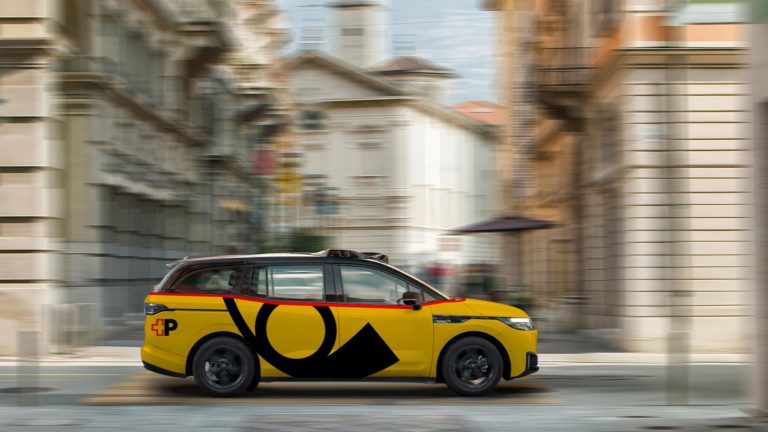
“AmiGo” – Autonomous ride-pooling in Eastern Switzerland
Autonomous electric on-demand mobility by PostBus, launching in Eastern Switzerland in 2027
Initiated-by Post AutoBERNMOBIL has operated automated EasyMile shuttles in the center of Bern with an On-Demand service. Extensive knowledge was gained on AV-technologies and social acceptance.


With the operation of automated EasyMile-shuttles as line 23 in Bern from summer 2019 to summer 2021, BERNMOBIL and its project partners were able to build up extensive knowledge on the AV-technology, especially regarding the maturity, the remaining challenges as well as the acceptance of the new technology. The vehicles were operated according to a timetable in a first phase, later on they could be called via a booking-app as an On-Demand service. The line 23 was integrated in the regular operating processes.
The pilot project of a self-driving vehicle in public transport was organized by BERNMOBIL together with its partners, City of Berne, Migros Aare, ewb and SBB. The main part was the operation of self-driving minibuses between July 2019 and June 2021 in the city of Bern. The vehicles used were one EasyMile EZ10 Generation 2 in the first year of operation and two EZ10 Generation 3 in the second year.
Key features of the project setup:
The overall system of EasyMile is sophisticated and the interaction of the components worked well. But it also showed the importance of a seamless interaction for a smooth operation of the vehicles.
The localization as well as the obstacle detection worked reliably. However, the vehicle had to be operated manually for about 25% of the daily operating time. It was not able to circumvent obstacles automatically or drive under bad weather conditions.
The feedback of the passengers was mostly positive. Some points were commented as areas for improvement, especially the low speed. For security reasons the maximum speed was 14 km/h, while the average speed was as low as 6 km/h.
The project showed that the technology of the vehicles is not mature enough to operate on public roads, without permanent surveillance by an operator. A business case for a public transport operator though is proven if a 1:1 surveillance by a human is no longer required.
From this experience, the following directions for further investigations can be derived: